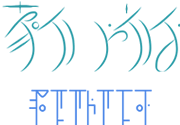
Hynna Djanardo, or Hynna, is an abugida devised by Justin Cheong. He was inspired by the Traditional Mongolian script and Japanese Hiragana. Each character is a phonetic syllable block in the form of (C)V(C). Although Hynna is intended to be used for the Djanardok language, the base letters can be modified to represent phonemes of various other languages such as English, Hungarian, and Cantonese.
The use of markers to modify sound was inspired by the Japanese dakuten, which is a mark used in both hiragana and katakana to produce a voiced consonant. In Hynna, voicing is indicated by a dot to the right of a character. For example, a [ka] glyph with a dot to the right becomes a [ga] glyph. Furthermore, Hynna characters look like they have a “backbone,” which was inspired by the Traditional Mongolian alphabet.
There are three main writing styles: grejnhynna, zohynna, and kélimhynna. Grejnhynna (from ‘grejn’ rigid and ‘hynna’ line) is characterized by a rigid, linear appearance and is used in print. In contrast, Zohynna (from ‘zo’ hand) features curves and strokes. It is found in both writing and print. Kélimhynna (from ‘kélim’ running) is a cursive form where syllable blocks are written in one swift motion. Because Zohynna and Kélimhynna are handwritten, the style varies from person to person.
Most of the Hynna letter forms are derivative versions of each other. Markers may indicate the manner of articulation as well as the point of articulation. The image below shows the extent of letter derivation in forming different phonemes.

Markers appear on the right side of the base letter and are used to modify consonant pronunciation.
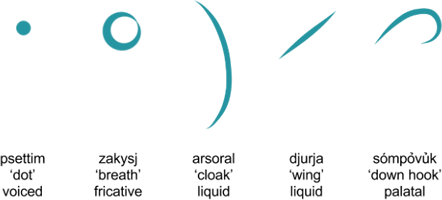
Vowels are written to the left of the base letter with the exception of ủ [y], which includes a right facing foot. The image below illustrates the names and shapes of the vowels in Djanardok.
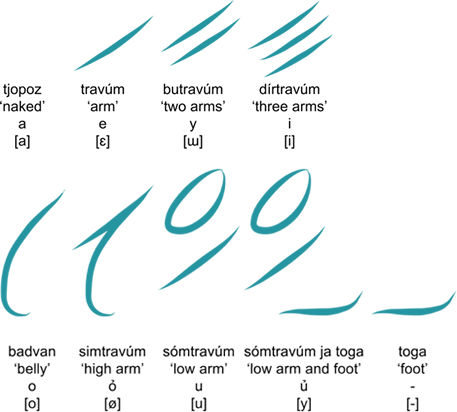
Consonant bases have an inherent vowel [a] when no vowels are attached. They are combined with vowels to produce syllable blocks. For example ‘ta’ and ‘o’ make ‘to.’ Syllables presented in the following tables are in the zohynna style.
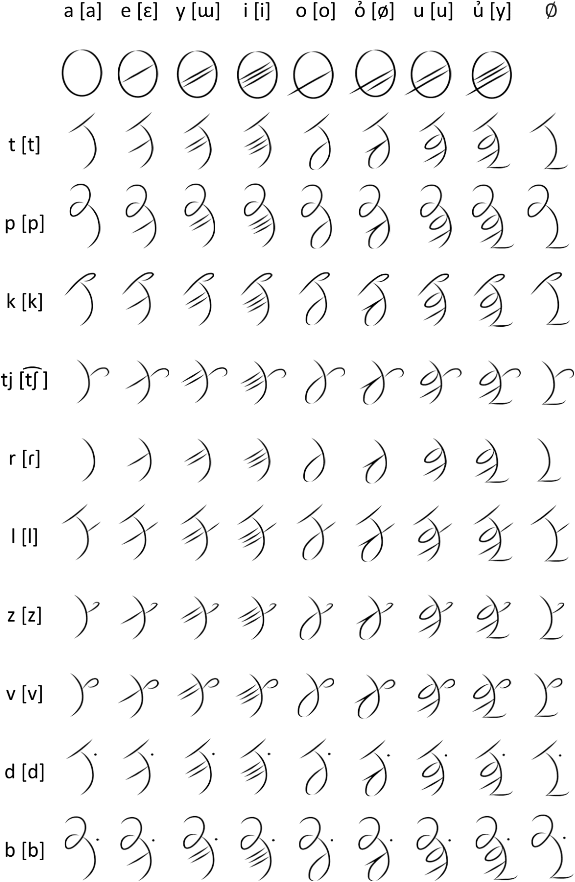
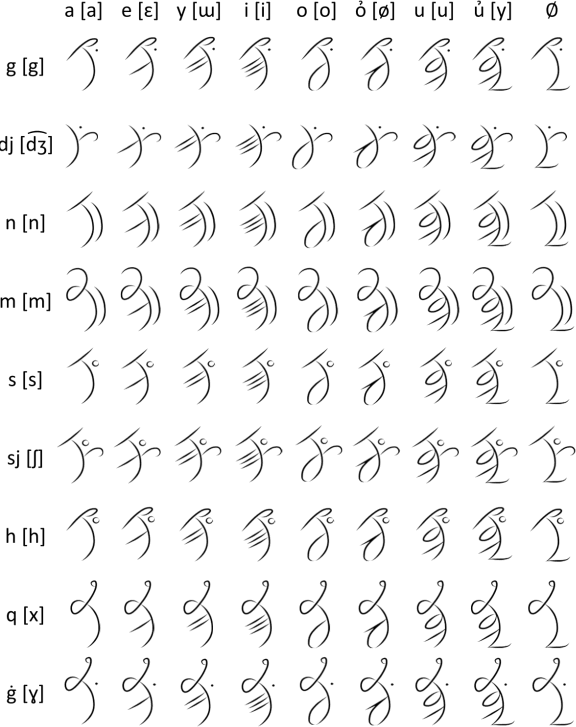
Long vowels are formed by writing a syllable block as if the vowel was regular length and then adding the isolated form of the vowel right after.
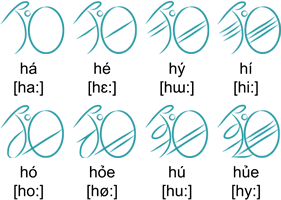
Muted consonants allow the coda of a syllable to be written in line with the rest of the word. Because they tend to take up a lot of space, syllable codas can be written as diacritics, which vaguely resemble the consonant they represent. Every consonant has a corresponding diacritic, but the most common ones are displayed in the following image.
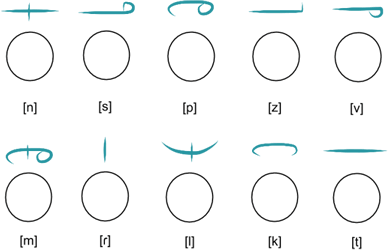


The first two images show two samples of handwritten zohynna. The last sample demonstrates what zohynna would look like in print.


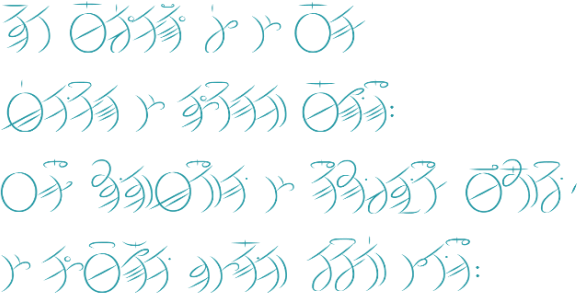
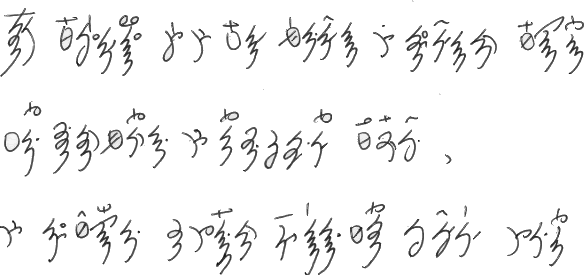
Tutta ensỏrlesiq vor ja anly ỏrdelekti ja sjulaktyne engirim. Azym bunúnamdy ja temberỏdủlam esmandok, ja sjékkilde ruvadynne tjettirdiestum toloknar vadarym.
All human beings are born free and equal in dignity and rights. They are endowed with reason and conscience and should act towards one another in a spirit of brotherhood.
(Article 1 of the Universal Declaration of Human Rights)
Constructed scripts for: Ainu | Arabic | Chinese languages | Dutch | English | Hawaiian | Hungarian | Japanese | Korean | Lingala | Malay & Indonesian | Persian | Tagalog / Filipino | Russian | Sanskrit | Spanish | Taino | Turkish | Vietnamese | Welsh | Other natural languages | Colour-based scripts | Tactile scripts | Phonetic/universal scripts | Constructed scripts for constructed languages | Adaptations of existing alphabets | Fictional alphabets | Magical alphabets | A-Z index | How to submit a constructed script
[top]
You can support this site by Buying Me A Coffee, and if you like what you see on this page, you can use the buttons below to share it with people you know.

If you like this site and find it useful, you can support it by making a donation via PayPal or Patreon, or by contributing in other ways. Omniglot is how I make my living.
Note: all links on this site to Amazon.com, Amazon.co.uk
and Amazon.fr
are affiliate links. This means I earn a commission if you click on any of them and buy something. So by clicking on these links you can help to support this site.
[top]